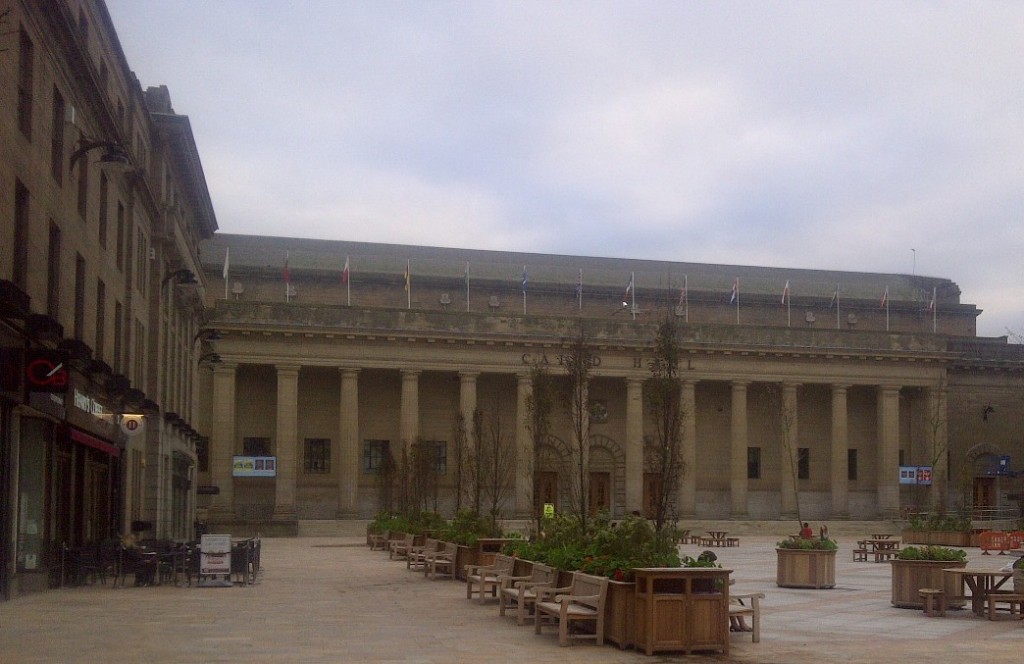Many of us are familiar with the phrase ‘Jam and Jerusalem’ as an epithet for the Women’s Institute but did you know that ‘Jam and Journalism’ could be similarly applied to Dundee?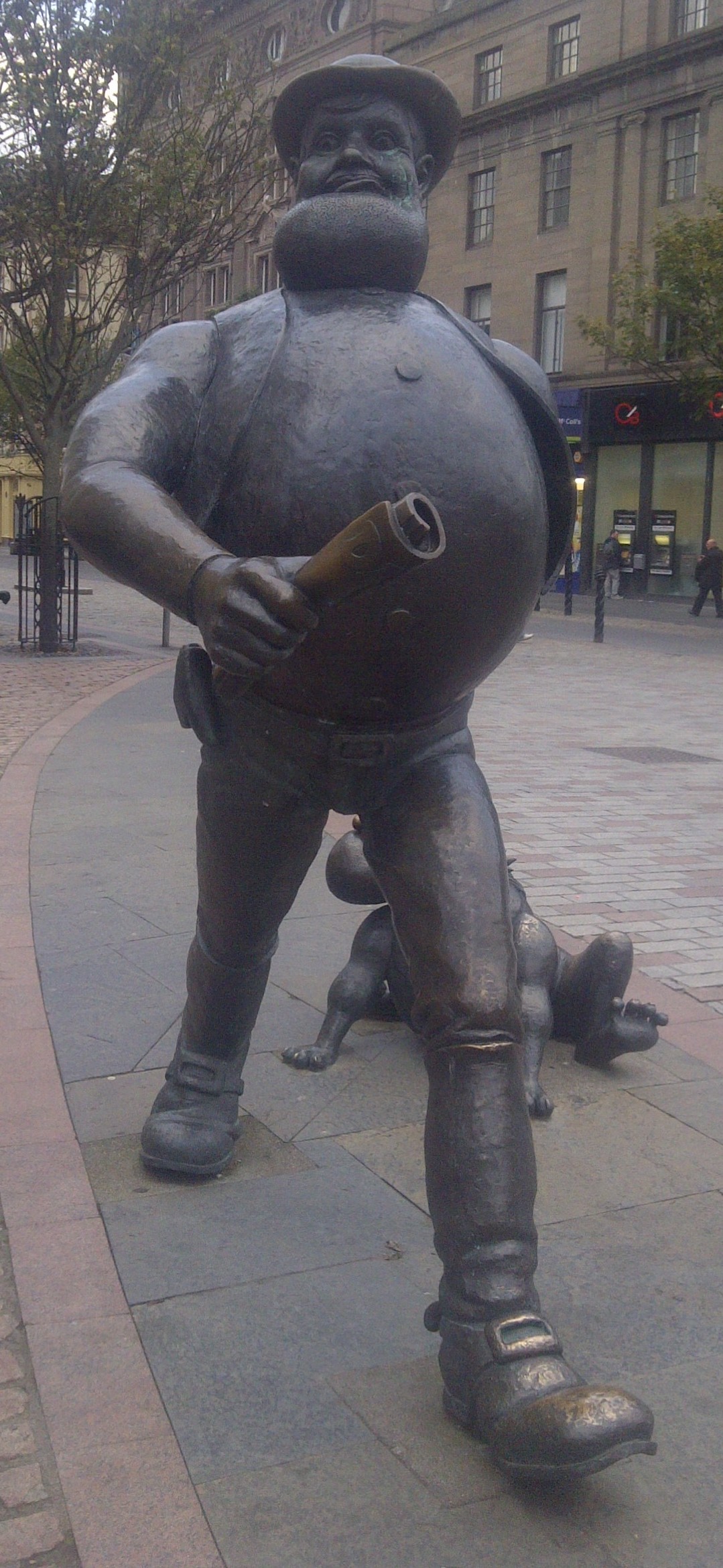
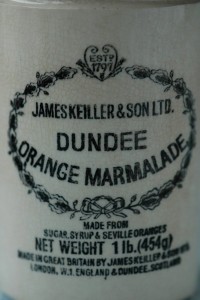 Dundee’s association with jam stems from Janet Keiller’s 1797 ‘invention’ of marmalade (pictured left). Journalism in Dundee refers to the publishing company of D. C. Thomson & Co. Ltd. Famous for children’s comics and magazines including The Beano and The Dandy (picture of Desperate Dan, right).
Dundee’s association with jam stems from Janet Keiller’s 1797 ‘invention’ of marmalade (pictured left). Journalism in Dundee refers to the publishing company of D. C. Thomson & Co. Ltd. Famous for children’s comics and magazines including The Beano and The Dandy (picture of Desperate Dan, right).
The considerable wealth that built Dundee came from jute. Jute is a rough fibre from India used to make sacking and canvass. By the 1830s, it was discovered that treatment with whale oil, a by-product of Dundee’s whaling industry, made the spinning of the jute fibre possible, which led to the development of a substantial jute industry in the city.
If you have not been to Dundee, and it is quite a way north, then you have missed one of Britain’s most interesting and picturesque cities with a very rich history. Dundee is also home to RSS Discovery, the last 3 mast ship to be built in Britain by the Dundee Shipbuilders Company in 1901 on which Captain Scott and Shackleton sailed to Antartica. There is a new visitor centre dedicated to the ship and its illustrious history.
The trip up to Dundee
Our road train of the 3 vehicles required to transport the organ and associated speakers came into town from the West along the stunning Firth of Tay. One first sees the Tay rail bridge which was the scene of a tragic disaster. The bridge, built in 1871 collapsed on December 28th 1879 as a train passed over. All 150 passengers lost their lives in the worst rail accident in British history. It is difficult to reconcile the scene of this tragedy with the beautiful setting that greets us today with the new rail bridge now joined by a graceful road bridge (picture of bridge at the top of this page courtesy of: botond / 123RF Stock Photo ).
Setting the scene…
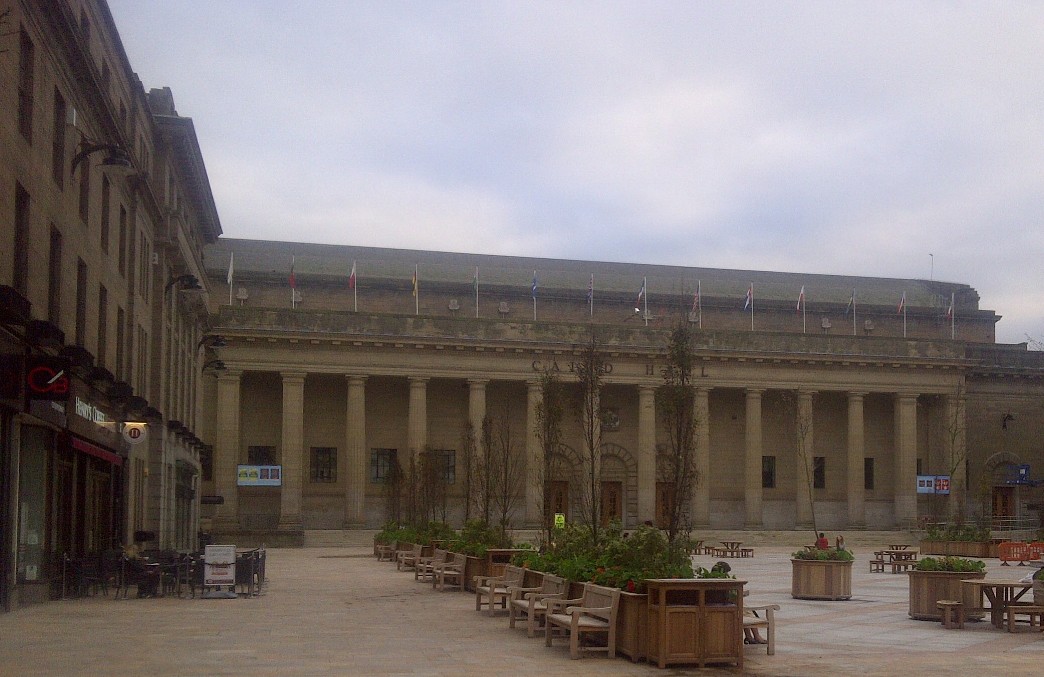
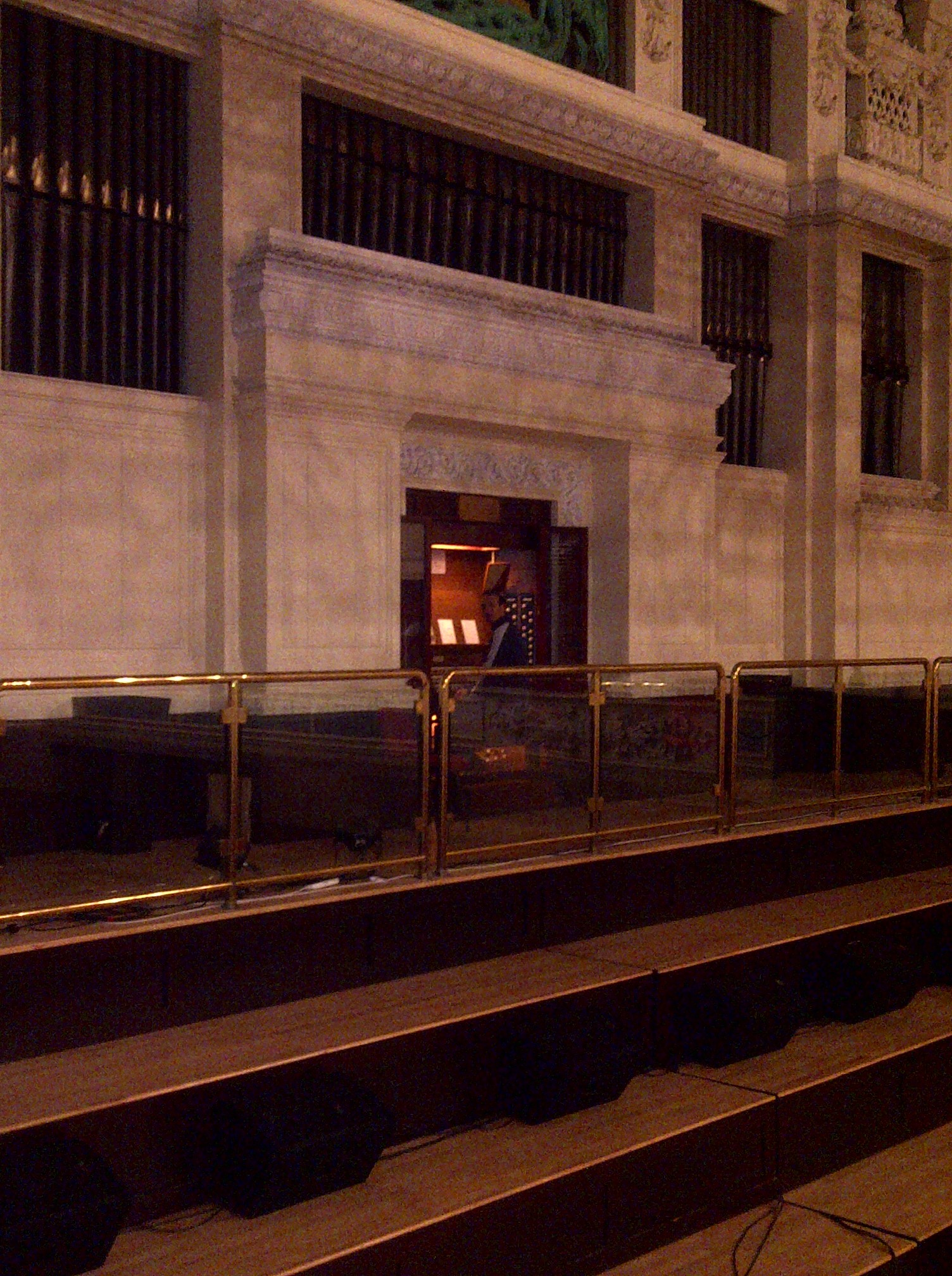 It was not until near 10.00pm on the night before the concert that we could start to set the instrument up in the Caird Hall (pictured above). Having left Bicester at 8.00am it was a very long day! As you might imagine we first switched on the pipe organ blower and had a little play (pipe organ and speakers pictured left).
It was not until near 10.00pm on the night before the concert that we could start to set the instrument up in the Caird Hall (pictured above). Having left Bicester at 8.00am it was a very long day! As you might imagine we first switched on the pipe organ blower and had a little play (pipe organ and speakers pictured left).
Stood on stage the sound was shattering and that was just the great diapason chorus. When full swell was added I was very nervous this was not going to be an organ battle but more an organ massacre. We then found out the great reeds were also in the swell box and when this was opened there had to be a serious health and safety issue.
Just 20 years ago this instrument was rescued from near dereliction and rightly so. It is a true giant of organ sound that can not adequately be described. It was an honour to have the keys and the opportunity to set new technology along side conventional pipe work of extraordinary quality. We had truly been set a David and Goliath contest.
By just before midnight we were all set up, 5000 watts and 20 speakers for the organ with 2000 watts and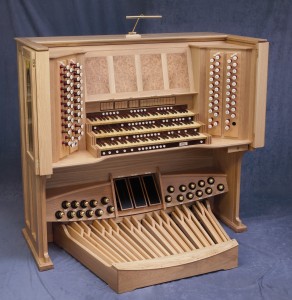 another 2 speakers for the bass. Weary we returned to our hotel with just 2 hours the following morning before our performers were expected for rehearsal. Just 2 hours to voice 7000 watts and over 82 individual stops (pictured right).
another 2 speakers for the bass. Weary we returned to our hotel with just 2 hours the following morning before our performers were expected for rehearsal. Just 2 hours to voice 7000 watts and over 82 individual stops (pictured right).
The big day arrived…
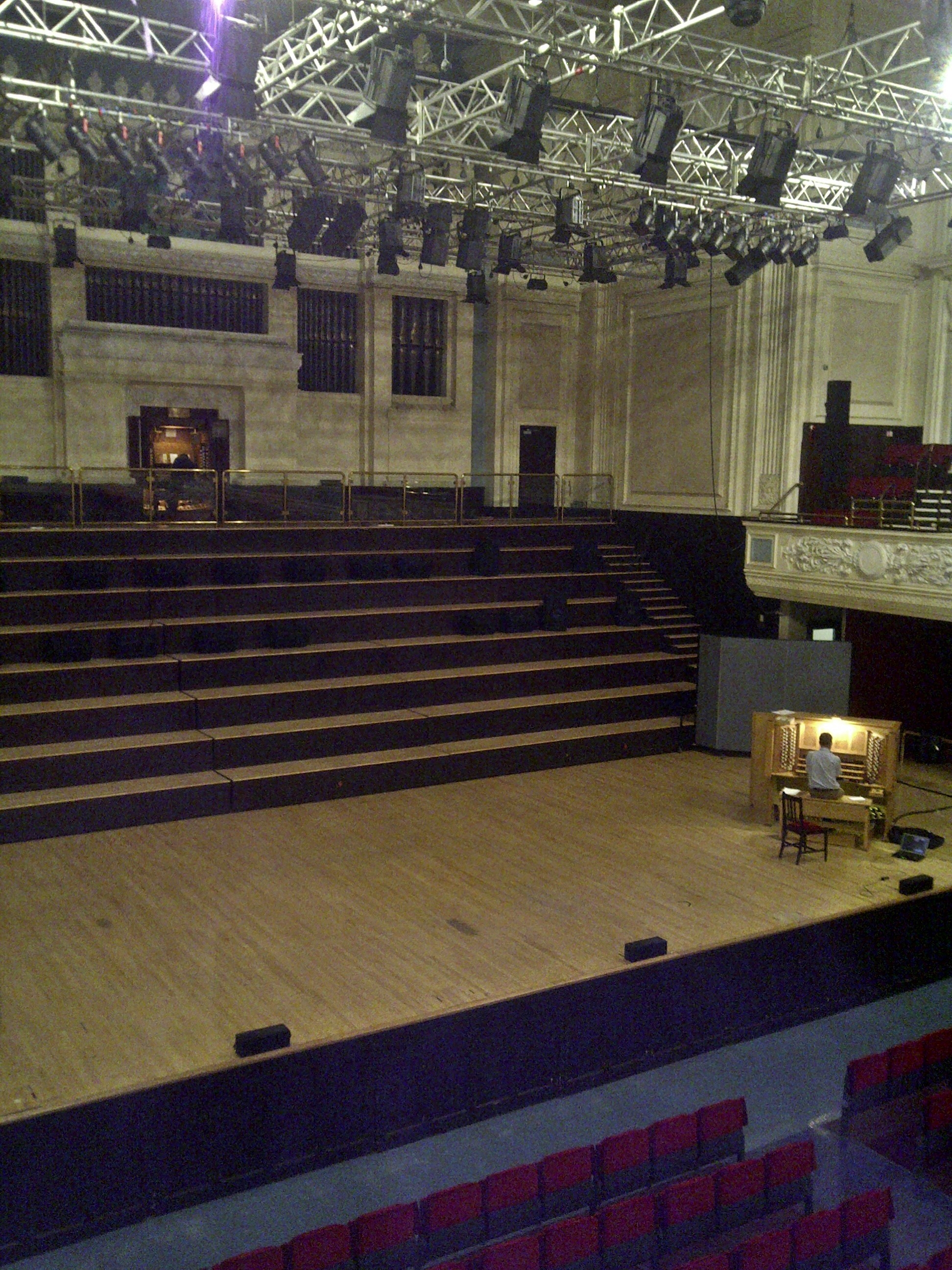 Despite my misgivings we were ready by 10.00am and even more satisfying we were standing our ground in volume and scale against the Harrison (both organs pictured left). The only thing left….the rather anxious wait to find out what Carol and Kevin would make of our instrument. Again any concerns were without cause. On entering the hall, out of sight of either console it was impossible to say with certainty which instrument was playing and our 2 performers were clearly enjoying the challenge of rehearsal. Kevin relied upon the pure organ voices and facilities while Carol perhaps more
Despite my misgivings we were ready by 10.00am and even more satisfying we were standing our ground in volume and scale against the Harrison (both organs pictured left). The only thing left….the rather anxious wait to find out what Carol and Kevin would make of our instrument. Again any concerns were without cause. On entering the hall, out of sight of either console it was impossible to say with certainty which instrument was playing and our 2 performers were clearly enjoying the challenge of rehearsal. Kevin relied upon the pure organ voices and facilities while Carol perhaps more
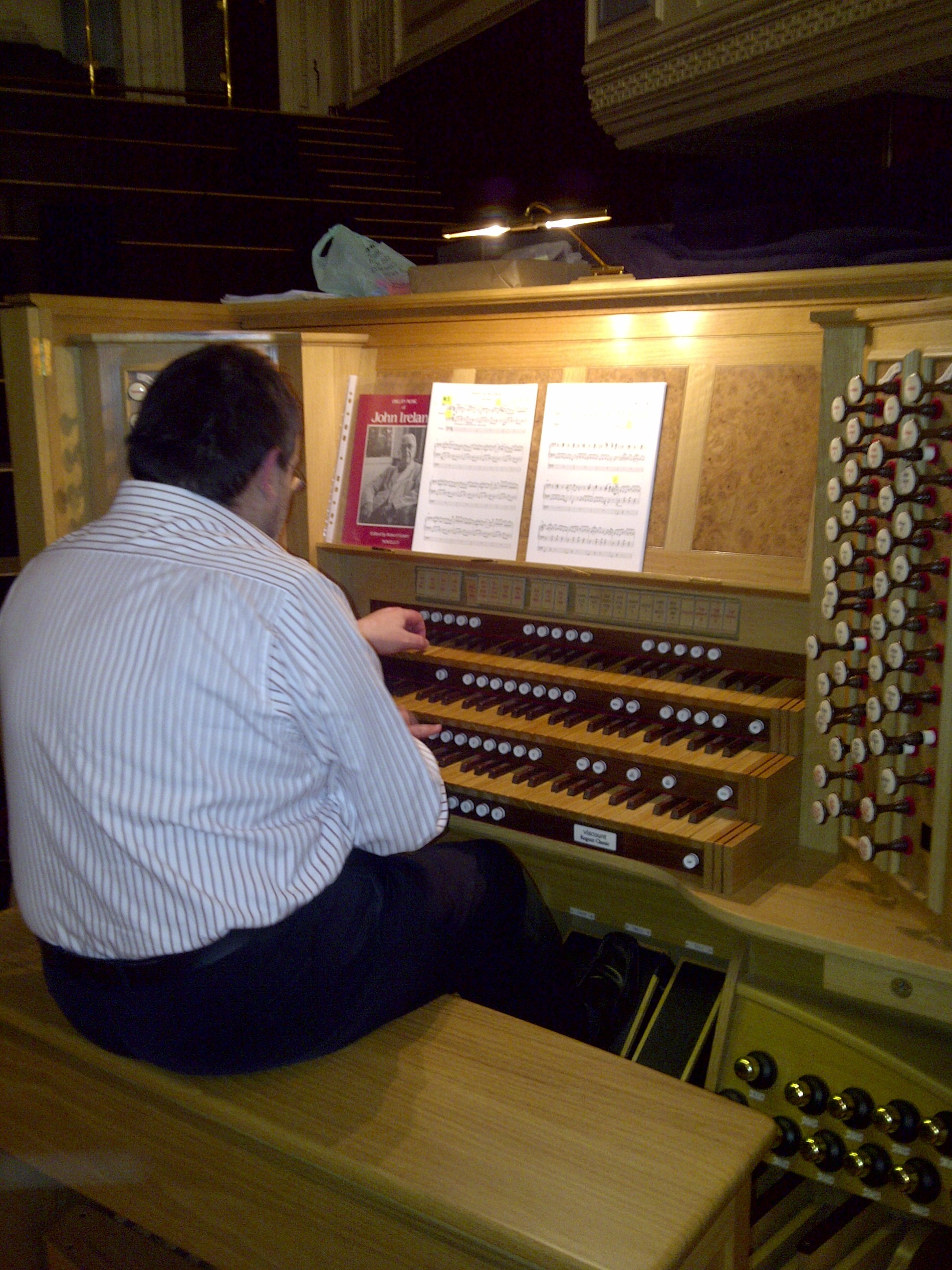
used to playing digital instruments in the USA, took full advantage of the orchestral voices available and also the ability to put the entire organ, including great and pedal, under the expression of a single swell pedal.
Rehearsal went well, just the performance left to wait for and hope that we would not encounter any power cuts, blown fuses or failed blowers.
A lively and informed audience started to filter in just before 7.00pm with those familiar with the power of the Harrison organ starting to take seats at the rear of the hall. At 7.30pm precisely our performers were introduced to the audience, the lights dimmed and we were off.
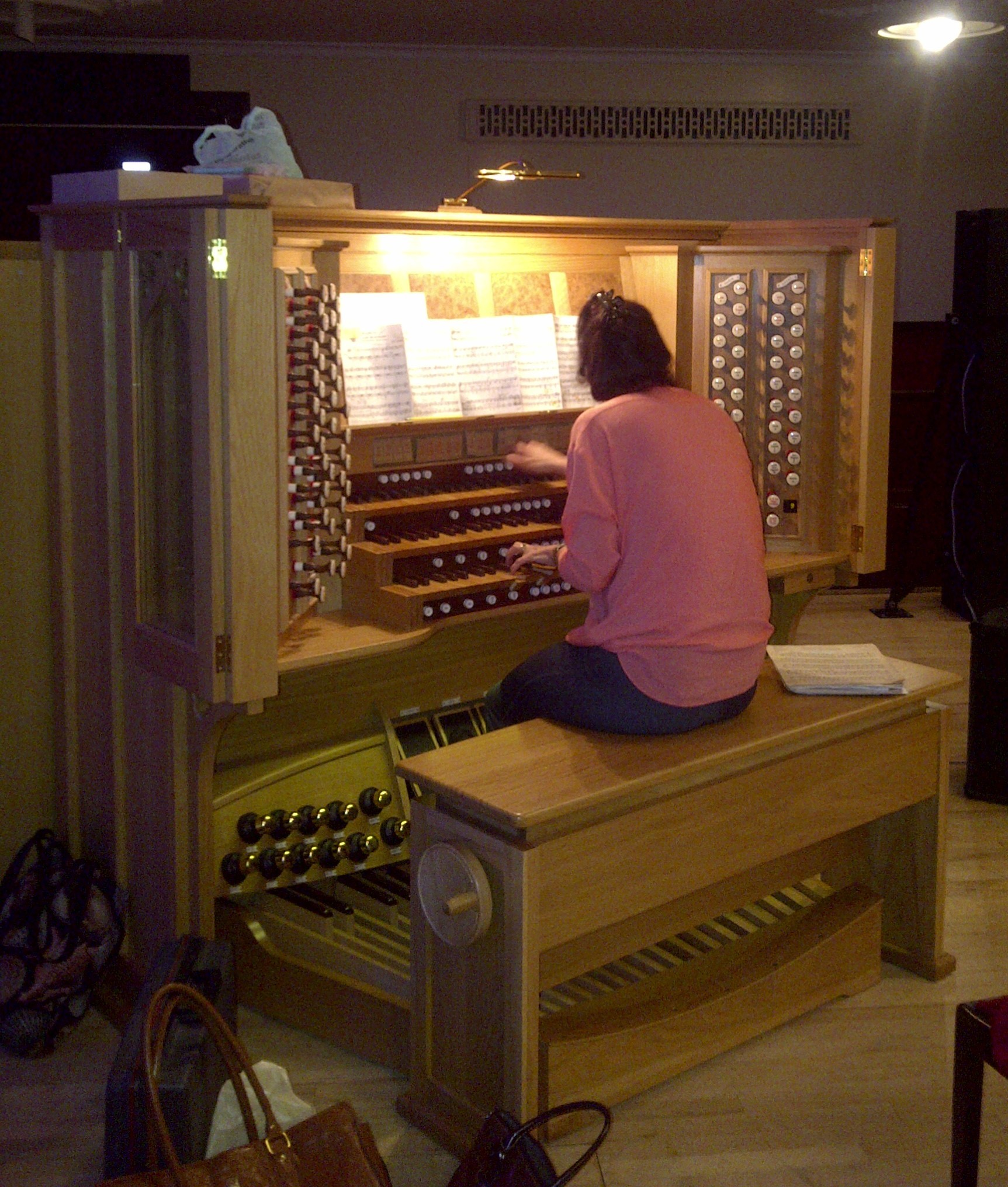
The Music…
Our talented performers at their respective flight decks opened with Susato’s Processional and Gigout’s Grand Choeur. The Harrison’s mighty pipe scaling and choruses were ably matched by the Viscount, and it was fair to observe that the Viscount’s larger specification was to thank for ranks of sparkling mixtures and mutations as well as the hammer blows, courtesy of two boldly voiced 32ft reeds.
A wonderful medley of Sousa Marches, the Dambusters, Widor’s Toccata and Boellman’s entire Gothic Suite saw effective duet treatment with both instruments in pole position at times as their quite different choruses came to the fore.
Solo items on the Viscount too were a highlight, as well as a chance for the ear drums to recover! Kevin played a superb solo rendition of Anderson’s Bugler’s Holiday, and two fiendish arrangements by himself and Percy Grainger of Irish folk tunes and ‘Molly on the Shore’. Carol played a soothing composition of her own ‘Twilight’ and ‘A wee bit of Scotland’ – a well engineered group of folk songs and tunes. We had already heard some of the Viscount’s percussion stops, but Bagpipes…really?! Well, not quite, just two very characterful smaller reeds on the Choir organ used together and played with a drone. How very convincing! ‘Phantom of the Opera’ was the final crescendo for both organs in dialogue before the audience wouldn’t let our talented duo depart without an encore in the form of Bach’s mighty D minor ‘Toccata’.
But….what of the Battle result and the sound?
Well, in truth, the Viscount team always knew it was in the presence of greatness and acknowledged the Harrison with due deference and respect. Pipe organs such as this continue to inspire digital manufacturers who strive to replicate the best from the sound these leviathans can produce. Designed by Alfred Hollins and the firm’s first concert organ, it was, is and always will be a magnum opus. However, the leathered diapasons, orchestral reeds and high wind pressures throughout meant the sound was really always intense, and one was aware that the Viscount’s larger specification and contrasting palette made for several different tuttis, rather than one, and many effects of sparkling tone in addition to real grandeur and power when needed. What was truly remarkable however, was how the two instruments complemented each other. It really was clear that this Battle was very different to battles of the past — one where a well known pipe organ was simply being played flat out in order to get one over on a digital instrument powered with enough amplification to test the National Grid! This was an evening every organ enthusiast would have loved (except perhaps, for the Baroque purists…!) for it showcased two terrific instruments in a most entertaining way – both a testament to their builders, voicers and designers. Virgil Fox will long be remembered for his ‘Heavy Organ’ concerts which rivalled rock concerts in sheer power as he toured the USA raising the profile of the instrument and its repertoire. This was easily on a par with an eclectic choice of music brilliantly presented.
A jubilant and buzzing audience made its way out into a calm Dundee evening and we went to let off steam at a 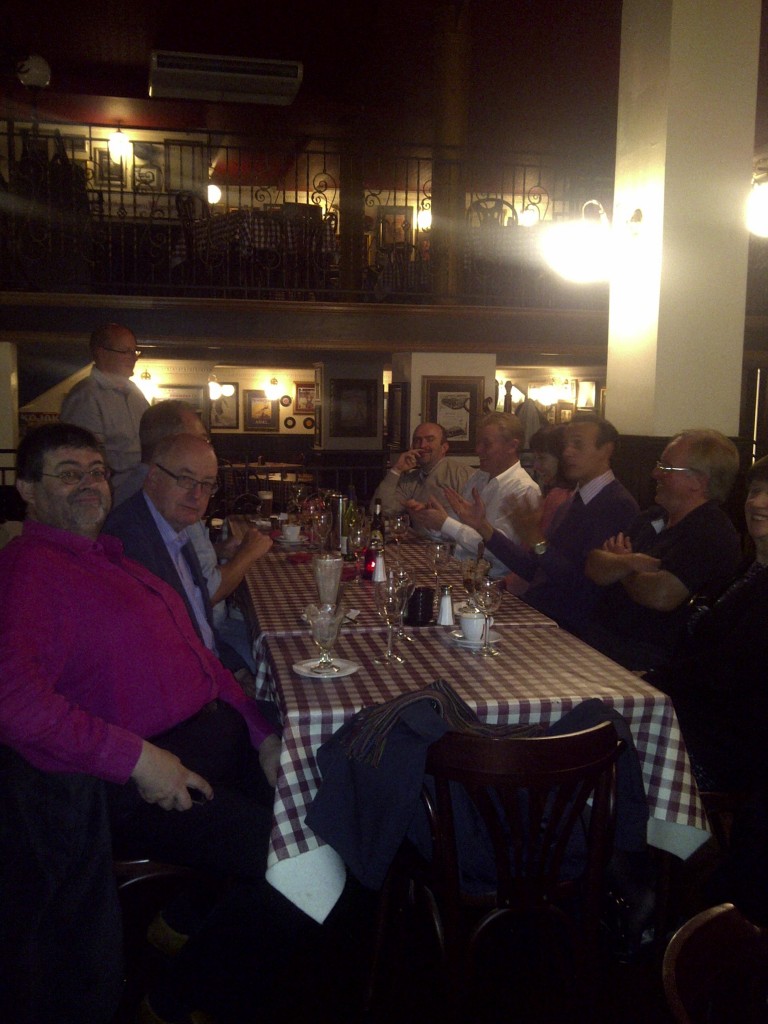 nearby Italian restaurant with the performers (pictured right).
nearby Italian restaurant with the performers (pictured right).
It was very gratifying the following week to read Ian Stewart-Hunter’s report on the event from which I lift the two quotes below:-
‘It was a contest that both instruments won, both complementing and complimenting each other. The Harrison & Harrison was more individual and quirky, with its own considerable strengths, the Viscount of impressive tone, heft and evenness from the lowest floor vibrating depths through a range of colours, up to the most delicate of stops in quiet dynamics and arguably better key response’.
‘If you are in the market for an organ then the musicality and impact of both are high and largely cannot be distinguished. But then compare the cost of a new pipe organ with that of the Viscount Classical Organ and there is no contest’.
I have had a passion for church organs since the tender age of 12. I own and run Viscount Organs with a close attention to the detail that musicians appreciate; and a clear understanding of the benefits of digital technology and keeping to the traditional and emotional elements of organ playing.
